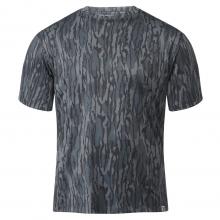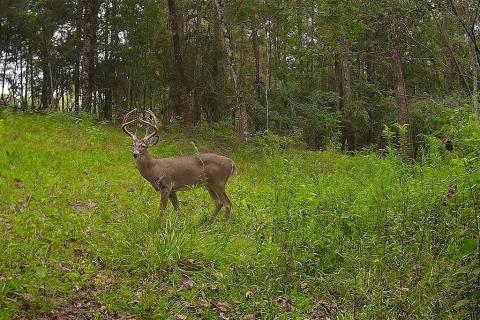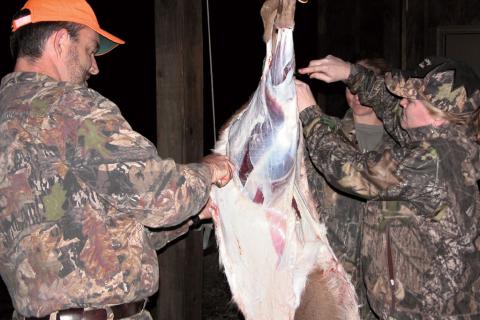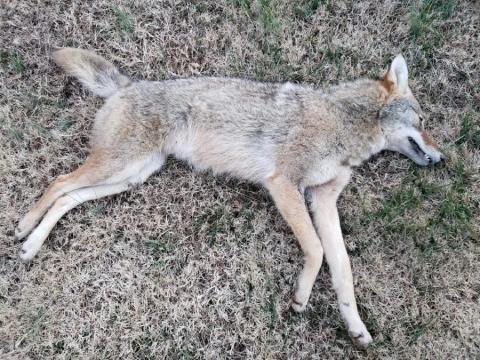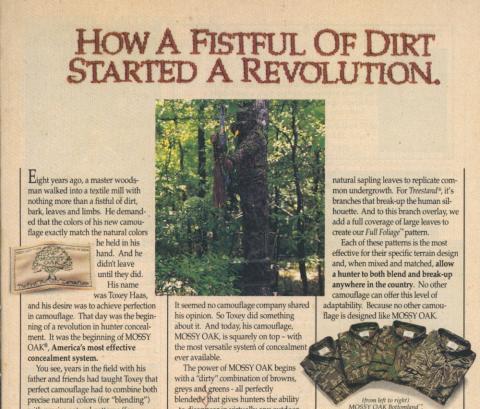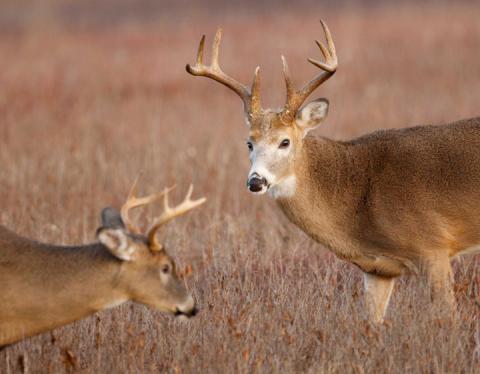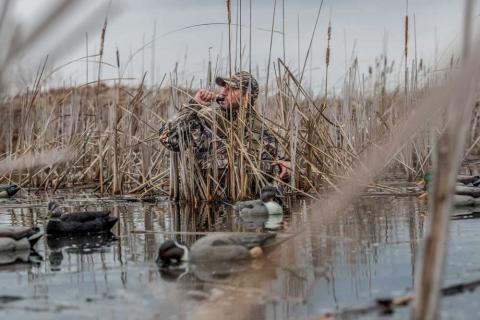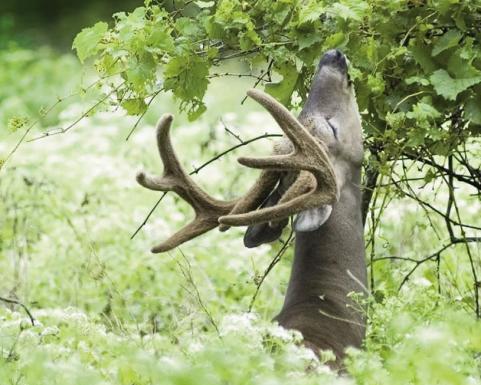Brad Fitzpatrick | Originally published in GameKeepers: Farming for Wildlife Magazine. To subscribe, click here.
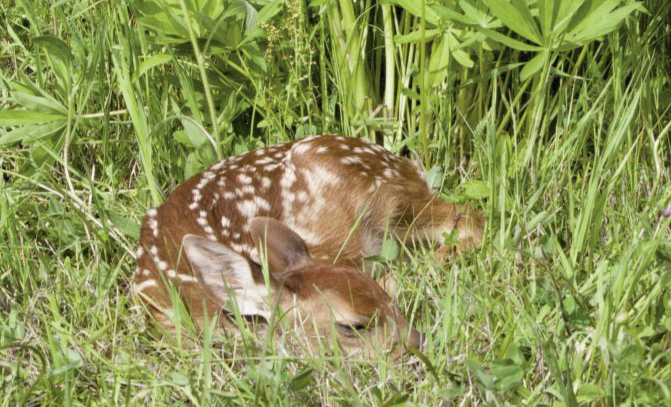
Deer population management was not so long ago left primarily to state and local wildlife biologists. The principal tool for managing the population was adjusting season dates and bag limits. However, these game laws oftentimes applied statewide. Today, more and more landowners are shouldering the burden of managing their own deer herd, and although they usually don’t have the ability to manipulate season dates or bag limits, private land managers have a host of other tools at their disposal.
To effectively manage deer on your property managers must learn to think like biologists. That means getting far more involved in the management process than just avoiding shooting young bucks and harvesting excess does. To be the best land manager possible you need to look at your deer herd as a whole. One critical mistake that many land managers make is focusing strictly on the mature deer in the herd, specifically bucks. As any good biologist will tell you, mature male deer are only a tiny subset of your overall population. For optimal herd health, you need to evaluate the entire herd.
One key indicator of herd health is fawn mortality. There are a variety of factors that can alter fawn mortality, and actual mortality numbers are difficult to discern. Helping deer survive from a fawn to a mature animal is an essential and often overlooked element of wildlife management. Here’s what you need to do to protect the most vulnerable deer on your property. For starters, let’s look at the most common causes of fawn mortality.
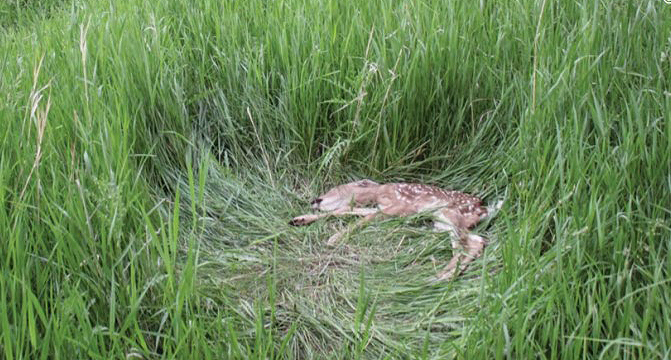
Why Fawns Die
The most obvious cause of fawn mortality is predation, and on many properties where fawn numbers have noticeably declined predators are viewed as the primary culprit. Without a doubt, predators do take a large number of fawns. Coyotes are the usual suspects, and rightly so, Coyote populations have boomed over the past two decades and they are one of the few mammals that are as adaptable and as willing to live in proximity to humans as whitetail deer.
Coyotes can cause significant declines in fawn populations, but thankfully their numbers are controllable in most areas. Coyotes are widely considered a pest species that can be shot year round with limited control, and that’s a very good thing for whitetail managers. But effective coyote control—reducing coyote numbers and maintaining those smaller populations is really difficult.
While conducting an aerial survey in Texas over an area where coyotes had supposedly been “shot out” we saw that there were dozens of coyotes still living on that ranch - many of which were within a quarter-mile of the main residence! Effective coyote control is beneficial to decreasing mortality rates in fawns, but taking the odd coyote every other year probably does very little to reduce populations and protect deer. A prolific plan must be put into place that includes trapping, hunting and habitat management.
Other predators are not so easy to control. Bobcats, eagles, wolves, mountain lions, and black bears are also responsible for fawn deaths, but for a single landowner managing these predators is difficult or, in the case of eagles, impossible. And perhaps the most overlooked of all predators, the feral dog, exists in almost every corner of the country. In the spring, roaming dogs take a large number of fawns, and the problem is particularly bad in areas where there is a significant human population (and, correspondingly, a large population of dogs) bordering less developed land where deer populations are a draw for canine predators.
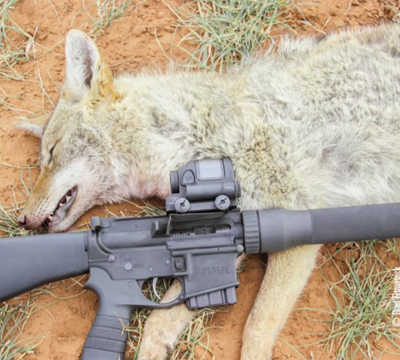
outright, which has minimal impact unless you significantly
reduce populations over the long-term, you can plant cover
that makes it difficult for these predators to find and catch
fawns in the first place.
Predation, though, is natural (aside from feral dogs), and nature has a magnificent way of recovering. High predation rates mean less food for predators and, in sequence, a decline in overall predator population. Predators account for a portion of fawn mortality, but they certainly are not the only danger fawns face, nor are they the worst. Accidents, disease, and other parasites are all factors that affect mortality, but the primary killer of fawns has more to do with the herd’s social structure than any outside force.
High population densities lead to high stress, and as any ecologist will tell you, increased stress produces a whole host of problems within a population. More fawns are abandoned by does who cannot meet their own dietary needs. Once deer reach carrying capacity and food sources are overwhelmed a decline in fawn survivorship is all but guaranteed.
Improving Fawn Survivorship
The very best deer managers don’t want to just talk about what large deer they have on their property. Does, they understand, are a critical element in management, specifically in their role of producing more fawns and future generation of wall-hanging bucks. But to produce good bucks, four, five, and six years down the line, you need to take care of your does, and subsequently your fawns, right now.
Abandonment, stillbirth, and undernourishment are all risks facing your fawns this year, and a high mortality this year will be costly in years to come. For that reason, you need to take the time to minimize fawn mortality, and that means providing does and fawns with the food and cover they need in the winter and spring. Many deer managers are concerned with available food and cover in the summer and winter months when bucks are growing antlers, but this is a short-sighted management practice. To maintain a healthy deer herd you need to dedicate yourself to providing deer with adequate forage during the winter and spring, when does are under the most nutritional strain and the risks of losing fawns is highest. Predator control is one step, and it can be beneficial to spend the winter months working to keep coyote populations at bay, but it is perhaps more important to feed your does and help them build the reserves they’ll need for milk production and to give birth to healthy fawns.
All winter forage is not created equal, so don’t assume that just because there is food that it provides the right type of nutrition for deer. In areas that have been cleared, invasive Amur honeysuckle is one of the first plants to reappear in disturbed ground in many areas of the country. This plant grows quickly and stays green through much of the winter, giving the impression it’s a viable food source and that whitetails have plenty to eat. In reality, it’s a low-nutrient shrub that outcompetes other native food sources, so in an area where forage appears abundant your does could quite literally be starving. This winter stress results in fawn loss in the spring, and while winter-killed deer are easy to identify, a low fawn survival rate is often less noticeable.
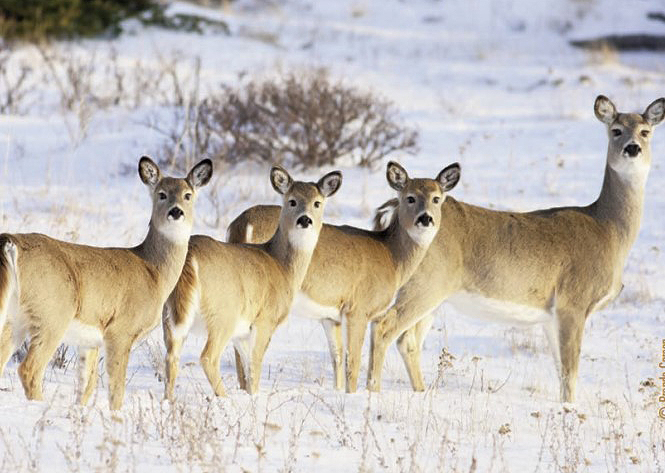
Feeding Does During Winter
Begin by looking at food sources that are cold tolerant, attractive and provide the nutrition does need. Legumes are high-quality forage that will help sustain deer through the lean months, so that’s a good place to begin. BioLogic’s Winter Peas are annuals that are planted in the summer in northern latitudes and during the fall months in the south, and this cold-tolerant blend offers sufficient protein to hungry does and grows well in a variety of soil types.
Winter Peas are also very attractive, and deer tend to focus their feeding on them heavily, so if deer densities are average to high you can expect pea plots to be grazed or overgrazed in a hurry. Because of the nutritional content and palatability it’s a good idea to provide ample peas as a primary autumn and winter food source for whitetails, but be sure that you plant enough so that the deer don’t outstrip their food supply. You must overwhelm the amount of mouths utilizing the crop to realize “terminal yield.”
Brassicas are possibly the best winter food for several reasons. It’s a good idea to dedicate multiple plots to this highly-palatable, nutrient-rich plant family. Winter Bulbs & Sugar Beets, Maximum and Deer Radish are highly-effective brassica offerings that will sustain deer through the deep freeze of late winter. Different brassicas become palatable at various times throughout the season, but you can expect consumption to happen from late summer through spring, and is an especially important food during the colder periods of winter.
When the green tops are cleaned away, deer will dig up the nutritious root-bulbs and will rely on this valuable, nutrient-rich food source through the trying months of January through April (depending upon your location), often when there is insufficient nutrition.
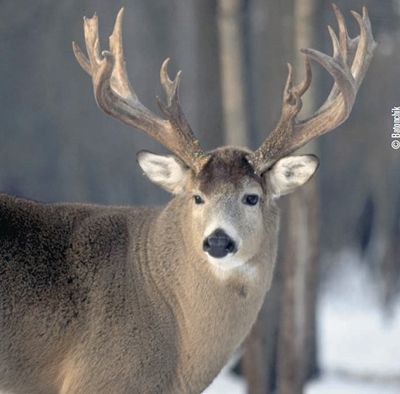
you hope to understand the true potential of your property
you need to reduce fawn mortality.
Premium Perennial, Full Draw and Green Patch Plus all contain brassicas as well as various other plants and will be utilized during late summer, through the hunting season and into winter, providing food sources for an extended period. When frost eliminates other food sources you’ll want plenty of brassicas available to sustain late-season does that are bred in addition to all those rut-weary bucks.
Cover Plants
Does utilize cover in the winter for protection against the elements, but adequate cover is critical in the spring when fawns are most vulnerable to attack by predators. In fact, mitigating cover and plantings that provide a physical barrier and preclude predators from finding or catching fawns, may actually be more effective for fawn recruitment than predator elimination. Deer have adapted over millennia to using dense cover to avoid predators, and in areas which are devoid of appropriate cover predators have a serious advantage.
Along fence rows and on the perimeter of food plots, planting a dense cover blend like Blind Spot serves multiple purposes. For starters, it provides a visual barrier that protects deer from predators (both the two and four-legged varieties) and, in the late winter and early spring the remaining grass provides ample cover for fawns. This is especially critical in areas where food plots have reduced other natural cover.
Native warm season grasses (NWSG) are one of the best cover types for fawning cover. Many varieties like big bluestem and Indian grass grow in clumps rather than a big conjoined clump of sod, so it gives fawns a route for escape and cover for concealment. Reducing fawn mortality is a critical step toward proper deer management, and it requires very little output. The results, however, can be dramatic, and five years from now the record-book buck you are chasing might never have been around were it not for the efforts you made to secure his health and safety today.







